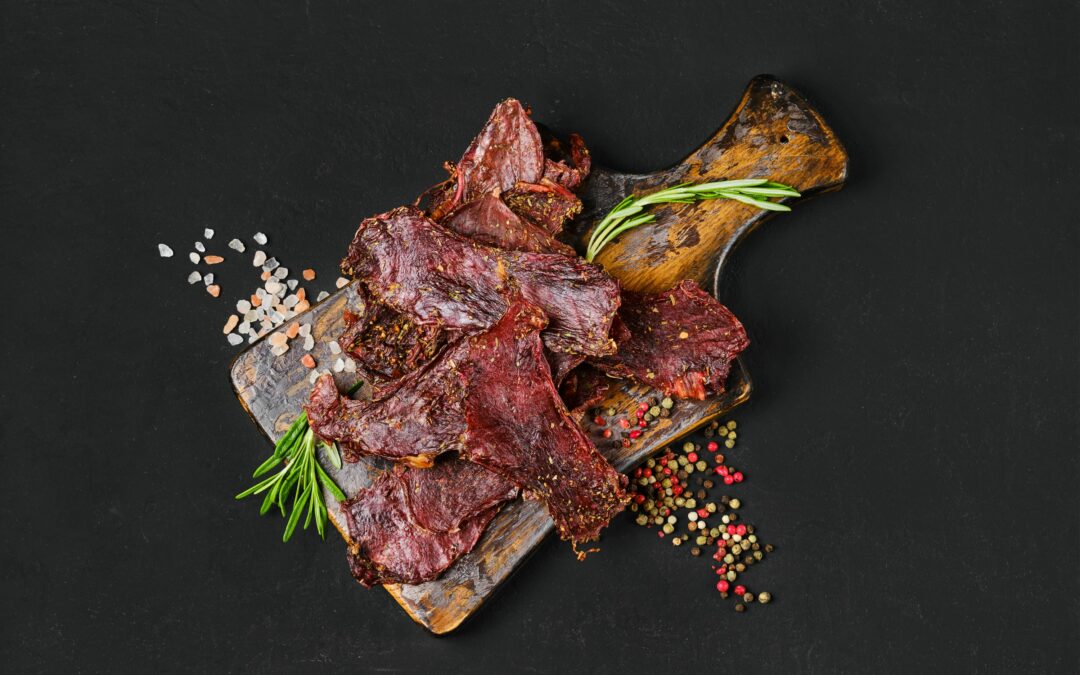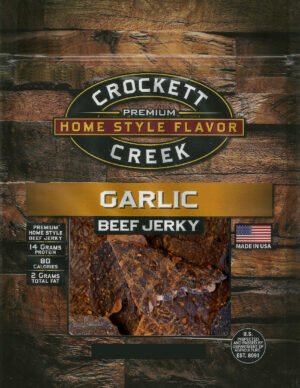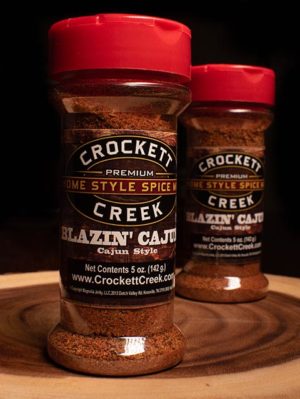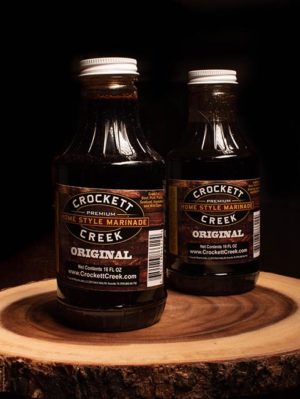When you think of jerky, classic beef likely dominates your imagination. But why limit yourself to the familiar? While we appreciate the appeal of a good old American beef jerky, a world of flavorful possibilities awaits, each with unique nutritional advantages and cultural stories. Whether you’re gearing up for a hike, a trip, or simply seeking a satisfying snack, consider venturing beyond the ordinary.
Beef Jerky in America
First, let’s look at how beef jerky came to be such a popular American snack. Beef jerky’s story begins with Native American meat preservation methods, adopted by early European settlers for its practicality. Over time it transitioned from a survival food to a widely enjoyed snack, fueled by its portability and high protein content. Today, it remains a favorite for active individuals and healthy snackers. Each serving delivers roughly 9 grams of protein, along with essential nutrients like vitamin B12, phosphorus, and folate, making it a nutritionally valuable snack.
The Wild Side: Discovering Game Jerky
“Wild game” includes wild animals like buffalo, elk, and deer, prized for their lean, nutrient-rich meat. Wild game meats offer a compelling alternative to beef, boasting a natural diet and active lifestyle that results in a lean profile. Furthermore, they often provide similar nutritional benefits to beef, including iron, B12, and other essential vitamins and minerals, plus some unique advantages.
- Buffalo Jerky
- High in protein yet low in fat and cholesterol, buffalo jerky is endorsed by the American Heart Association.
- Great source of zinc and iron, vital for energy production and a robust immune system
- Rich in selenium, a potent antioxidant, and vitamin B6, which supports nervous system function and mood regulation.
- Venison Jerky
- Helps lower LDL (“bad” cholesterol) and increase HDL (“good” cholesterol).
- Venison is high in DHA, an omega-3 fatty acid with anti-inflammatory properties, ideal for post-workout recovery. DHA also supports brain and eye health, potentially minimizing cognitive decline.
- Elk Jerky
- Like other game jerkies, elk is lean, high in protein, and rich in iron, zinc, and B12.
- It boasts high levels of L-methionine, an amino acid that strengthens bones, particularly beneficial for endurance athletes.
A Global Journey Through Jerky
While beef jerky feels quintessentially American, the concept of preserved, dried meat transcends borders. From the smoky depths of Africa to the sun-drenched plains of India, cultures worldwide have perfected their own unique jerky traditions. Let’s embark on a journey, exploring how five countries have embraced this savory snack.
- Bak Kwa—China
- This “pork chip,” a staple during Chinese New Year, features pork or beef marinated in a variety of flavors: five-spice powder, fish sauce, soy sauce, sesame oil, pepper, salt, and sugar.
- Traditional high temperature drying yields a harder texture and darker hue, but modern variations embrace lower temperatures for a softer, lighter result.
- Its adaptability shines as it migrated to Malaysia and Singapore, where it evolved with charcoal smoking and chili-infused profiles.
- Kilishi—Nigeria
- Derived from “Suya,” a grilled meat skewer, Kilishi uses thin sheets of sheep, beef, or goat, marinated in a peanut-based sauce called “Dobu.”
- Sweet and spicy flavors intertwine with additions like honey or date palms.
- Its six-month shelf life made it a vital food source for nomadic tribes, mirroring the role of jerky in Native American traditions.
- Cecina—Spain
- Originating from León, Cecina, often made from cow hindlegs, boasts a flavor similar to Prosciutto, with a drier, smokier edge.
- Simple preparation—salting and air, sun, or smoke drying—yields a crispy, subtly sweet appetizer.
- Served with olive oil, Manchego cheese, and olives, it embodies the essence of Spanish tapas.
- Uppu Kandam—India
- A Tamil Nadu delicacy, Uppu Kandam, typically made from goat mutton, is sun-dried with a blend of salt, turmeric, pepper, and chili powder.
- Unlike other jerkies, it serves as a flavor enhancer in gravies and curries, adding a salty and savory dimension.
- Its long shelf life makes it a valuable culinary asset.
- Coppiette—Italy
- From Lazio, Coppiette, meaning “little couples,” was created by resourceful farmers, utilizing the hind limbs of various livestock.
- Seasoned with fennel seeds and pepperoncino, the meat is cured, cut into strips, and dried in pairs.
- It offers a chewy, savory experience, reminiscent of a salami-jerky hybrid.
Just as cultures around the globe have crafted their unique jerky traditions, the world of exotic meats offers an equally diverse and thrilling culinary landscape. For those with a taste for the unconventional, jerky opens a realm of truly intriguing flavors, such as alligator, turkey, wild boar, duck, or even salmon.
The Universal Appeal of Dried Meat
This global exploration reveals that while the meats, seasonings, and preparation methods may vary, the fundamental concept of preserving meat through drying remains a constant. It speaks to the enduring appeal of jerky as a versatile, long-lasting, and flavorful food source, cherished across cultures and continents.
Find Your Perfect Jerky: The Variety of Crockett Creek
For those seeking exceptional jerky, Crockett Creek Jerky has been handcrafting premium jerky in the heart of Tennessee for over 30 years. Their recipes reflect a commitment to homestyle flavor and quality. They use all-natural, high-quality ingredients, ensuring every piece of their gluten-free, high-protein jerky is a testament to their dedication. Their handcrafted jerky collection features a diverse range of flavors and meat types. From beloved beef varieties to bold options and the unique flavors of buffalo, elk, and venison, they cater to every jerky enthusiast.





